HPE6-A75 HP Aruba Certified Edge Professional Exam Free Practice Exam Questions (2025 Updated)
Prepare effectively for your HP HPE6-A75 Aruba Certified Edge Professional Exam certification with our extensive collection of free, high-quality practice questions. Each question is designed to mirror the actual exam format and objectives, complete with comprehensive answers and detailed explanations. Our materials are regularly updated for 2025, ensuring you have the most current resources to build confidence and succeed on your first attempt.
A company requires AOS-Switches at the campus core. The switches:
Will act as the default gateways for several campus VLANs
Must provide redundancy for their services and tolerate the loss of a link or an entire switch
Must recover from the failure of one of the switches within a second or less
VRRP and MSTP are proposed to meet these requirements. What is an issue with this proposal?
What is the purpose of the captive portal URL hash key on an AOS-Switch?
The administrator expects the AP to connect to a cluster, but the AP tails to connect. The administrator examines the configuration of an AP from apboot mode shown in the exhibit. What can the administrator determine about the configuration of the AP?
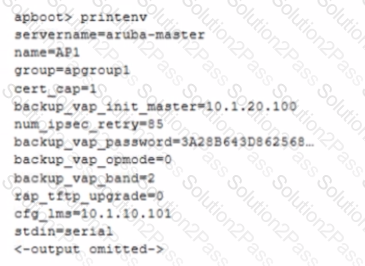
Refer to the exhibit.
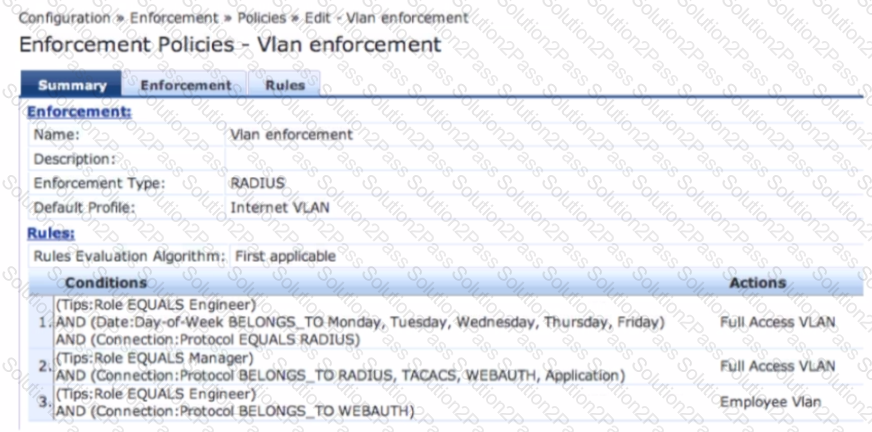
Based on the Policy configuration shown, which VLAN will be assigned when a user with ClearPass role Engineer authenticates to the network successfully on Saturday using connection protocol WEBAUTH?
A network administrator can set the OSPF metric-type on an AOS-Switch to Type 1 or Type 2. What is the difference?
Refer to the exhibit.

A network administrator sets up 802.1X authentication to a RADIUS server on an AOS-Switch. The RADIUS server and user devices are both set up to use REAP MSCHAPv2. The administrator tests the authentication and sees the output shown in the exhibit. Which issue could cause this output?
What must an OSPF router do when it receives a link state update?
What is a primary use case for RPVST+ on AOS-Switches?
A company has AOS-Switches, Aruba ClearPass, and Aruba Airwave. A network administrator needs to set up a new switch with the same settings found on other switches in the company. Which action rs likely to be the most useful to perform the task?
Refer to the exhibit.
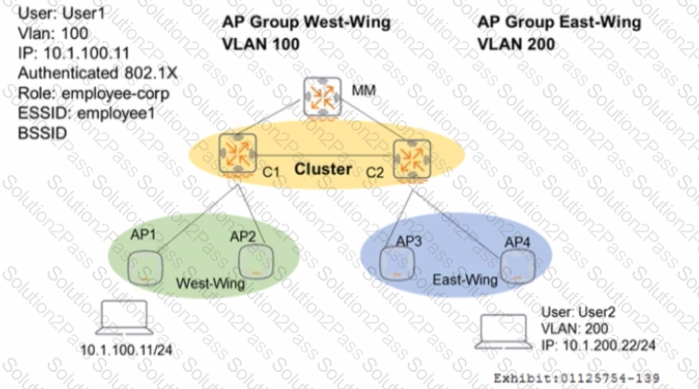
Controllers are configured m a cluster as shown in the exhibit. These are the network details.
• A Mobility Master (MM) manages the cluster.
• The cluster contains two controllers: C l and C2.
• API and AP2 use CI as their Active AP Anchor Controller (A-AAC). with C2 as their Standby AAC (S-AAC).
• AP3 and AP4 use C2 as their A-AAC, with CI as their S-AAC.
User1 establishes a wireless connection via API, where the Active User Anchor Controller (A-UAC) assigned is CI. with C2 as the standby. What happens when User I roams the wireless network and eventually their session is handled by AP3?
Refer to the exhibit.
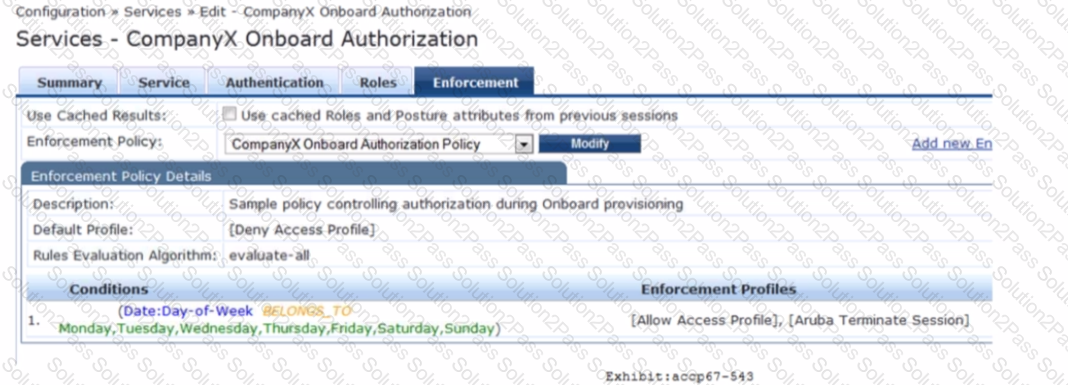
Based on the configuration of the Enforcement Profiles In the Onboard Authorization service shown, which Onboarding action will occur?
When is it necessary to use an SNMP based Enforcement profile to send a VIAN?
Refer to the exhibit.
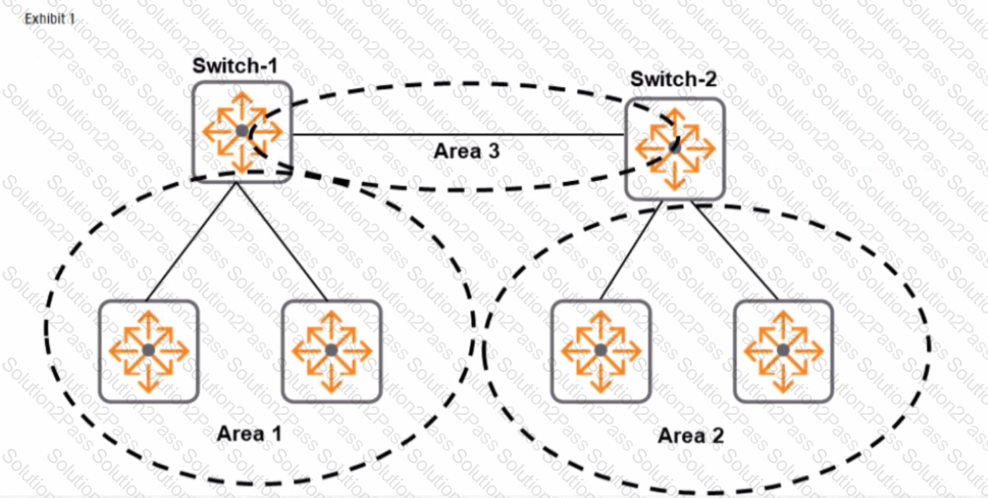
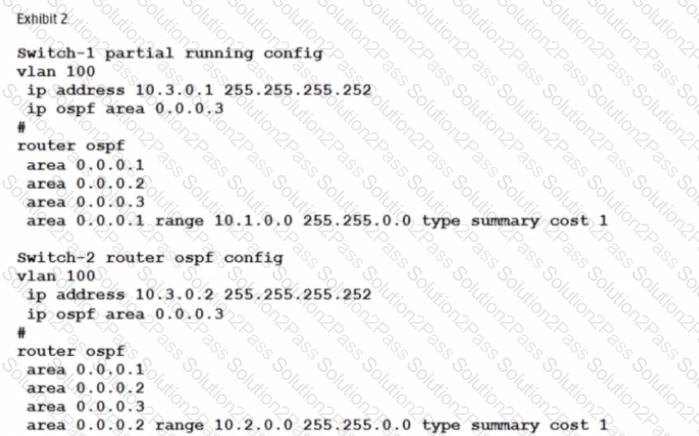
A company has attempted to implement OSPF without success. The devices in Area I need to be able to reach Area 2. Routes should be aggregated for advertisementinother areas. What must be changed to meet these requirements?
in a VPN that uses certificate-based authentication, which component must be configured on the Mobility Master (MM) to allow a RAP to successfully connect to a Mobility Controller (MC)
Refer to the exhibit.
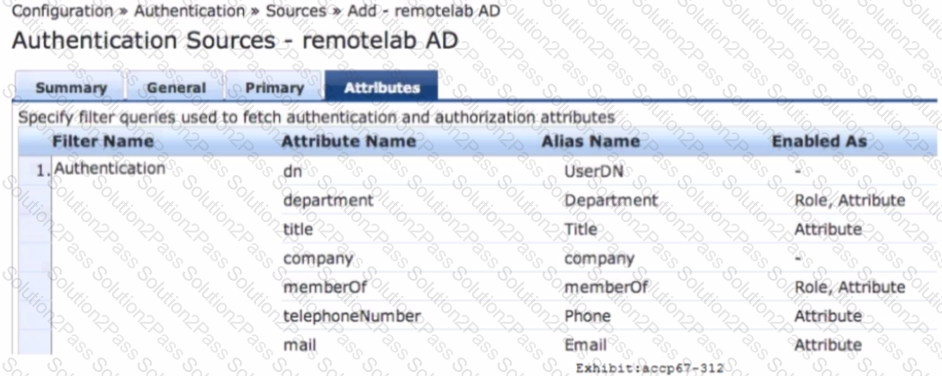
Based on the Attribute configuration shown, which statement accurately describes the status of attribute values?
An administrator configures the MultiZone feature for a company network, where a mobility cluster is the primary zone and a standalone controller in the company’s DMZ represents a secondary data zone. The administrator configures two AP Groups and respective VAPs for the zones on the Mobility Master (MM) in the primary zone. When the APs boot up and establish connections to both zones, the administrator notices that no data connections are established to the data zone.
What must the administrator do to fix this problem?
An administrator needs to authenticate users connected to an ArubaOS Switch where the switch authenticates the user, assigns the firewall policies to the user, and processes some of the users' traffic. Which connection method should the administrator configure on the ArubaOS-Switch?
An administrator supports a RAP to a branch office. Employees at the branch office connect to an employee SSID that allows for split tunneling of the employee traffic. The RAP initially connects to the corporate office controller, but later loses connectivity to it.
Which operating mode should the administrator configure for a secondary SSID to be advertised during the loss of connectivity?
